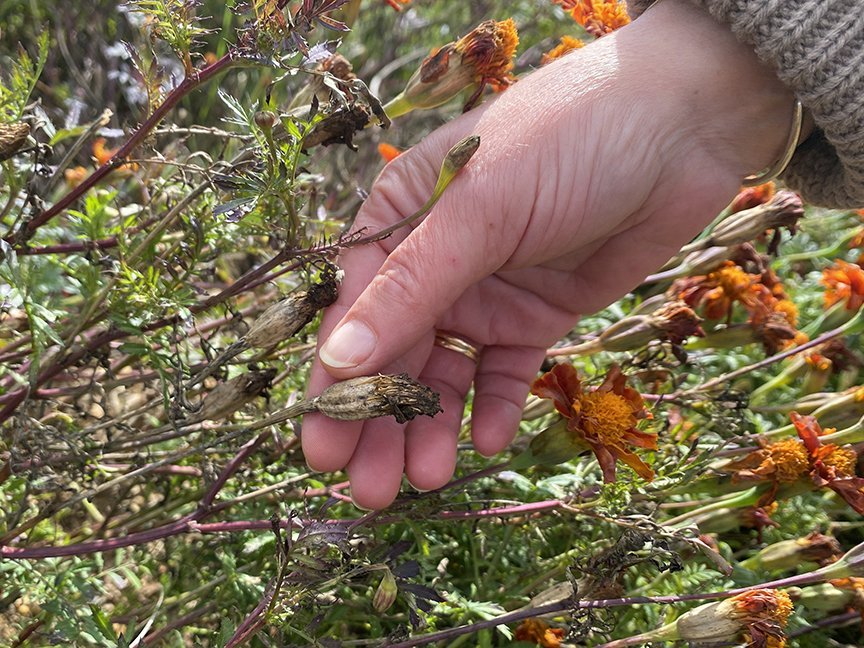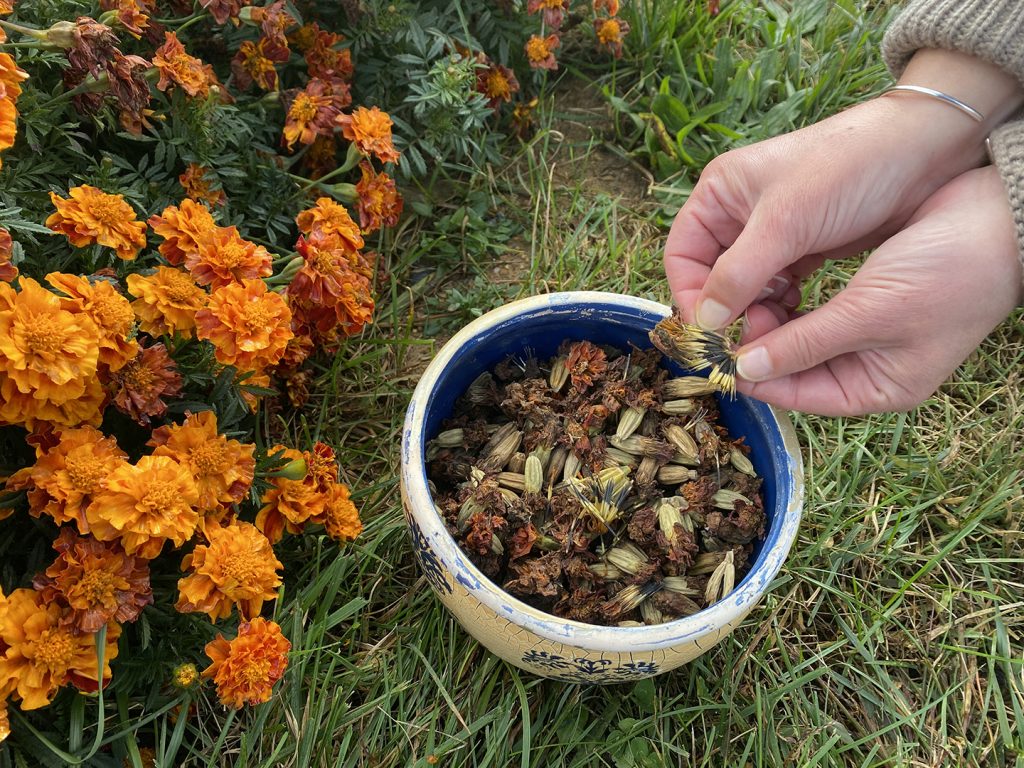Partner marigolds with vegetable plants in your garden, harvest the flowers for next year’s crop

Marigold flowers are great partner plants for your vegetable garden. There are several types of marigolds; the best variety to improve a vegetable garden is the French marigold. They come in various hues of yellow, orange and red. Besides being beautiful to look at, marigolds are also great companion plants. This means that they help vegetable plants grow by controlling pests without the need for pesticides or other nasty chemicals. You can plant marigolds along the border of your garden, or amongst the veggie plants to add a pop of color to your garden beds. Some of the benefits of planting marigolds include:
- Repelling garden pests, including squash bugs, tomato horn worms and white flies
- Protecting against harmful nematodes in the soil
- Attracting beneficial insects such as lady bugs, hoverflies and parasitic mini wasps
- Attracting pollinators like bees and butterflies


The best time to harvest the seeds of your marigolds is in the fall, between October and November. To do this, pluck dried flowers from your garden beds and collect them in an open bowl. If they are not yet completely dry, spread the blooms out on a tray for a few weeks to evaporate any excess moisture. Once fully dried, break open the flowers. Inside you will find thread-like seeds, which can be stored in an airtight container for the remainder of the cold months.

After the last frost in mid-spring, simply scatter the seeds over the area where you would like the flowers to grow. Lightly cover the seeds with soil and water them regularly or whenever there is a lack of rain. In approximately 25 days, the seedlings will emerge. In no time you will have an abundance of brightly colored flowers in your garden that can be repeated cyclically at no additional cost.

Comments ( 5 )